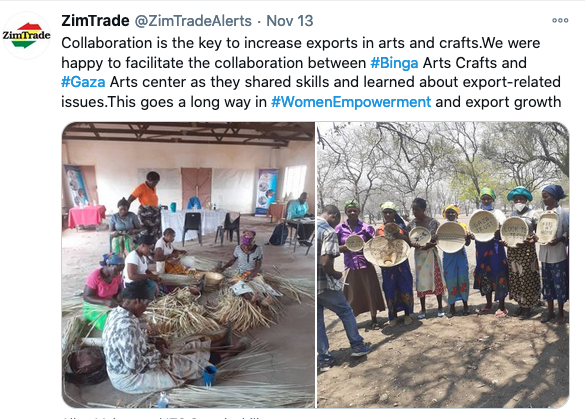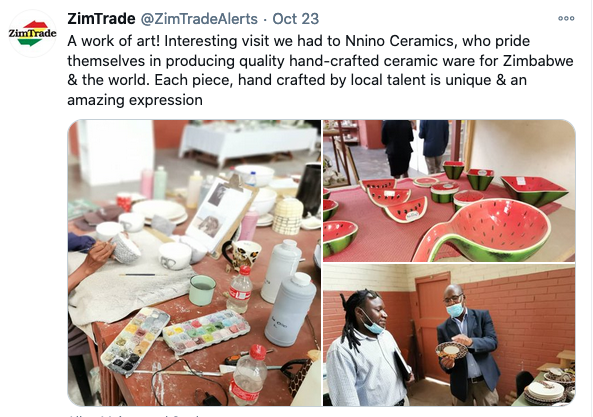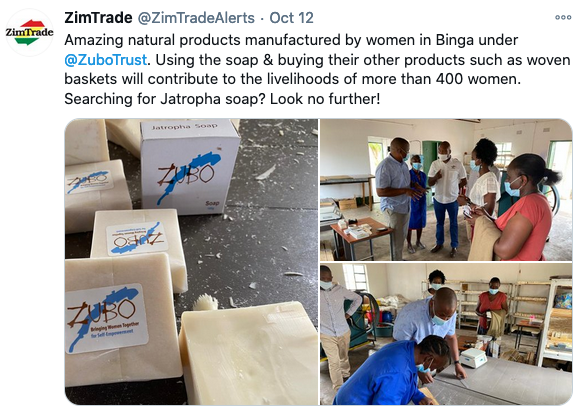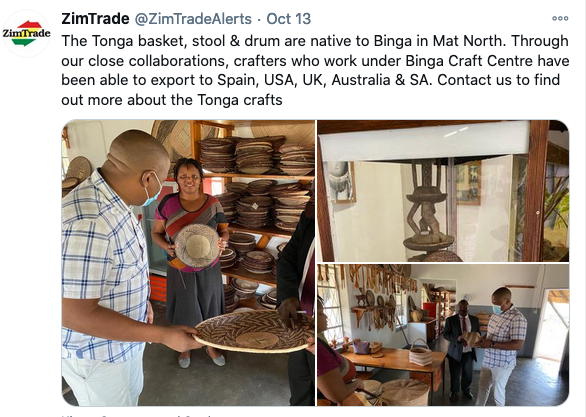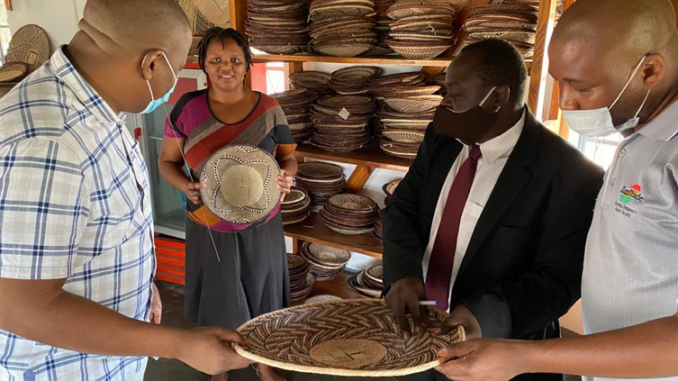
Image credit: @zimtrade
Full Disclosure: The Periscope Report is not affiliated to any digital selling platforms or organisations mentioned in this article nor is this article sponsored in any way.
Zimbabwe’s trade leading body – Zimtrade – a joint venture between the government of Zimbabwe and the private sector has been pushing for increased exports of handcraft products out of Zimbabwe.
Handicrafts are defined as items manufactured by hand using simple tools instead of machines. Handicrafts are unique products in that, for the most part, they also embody the traditions and cultures of certain country or region.
For those with insights of the global handcraft market, the drive by Zimtrade to promote exports in this niche sector is strategic. According to Research & Markets, the handicraft market is expected to reach US$984.8 billion by 2023. Between 2018 to 2023 the market will grow by some 11% per year.
Zimbabwe has a rich handicraft culture. Handicrafts have however remained generally depressed for decades due to weak domestic market interest and appreciation. Opening it up to exports is an important way of encouraging its growth, value and appreciation at national level.
Zimtrade has showcased some of the domestic handicraft makers such as Binga Arts Crafts, Gaza Arts center and Nnino Ceramics as shown below.
Using digital platforms to develop handicraft exports
In order for Zimbabwe to make impactful progress in developing exports around handicrafts, serious thinking must be invested towards the use of new and existing global digital markets. This is the most effective way to make Zimbabwe’s handicrafts surface on the international market compared to only waiting for tourist arrivals and attending fairs (which are slow at present due to Covid-19).
There have been a couple of trade related digital platforms launched in the country in recent months spearheaded by Zimtrade and its partners.
Zimtrade could consider taking the same approach. Launching a modern world class digital handicraft market for Zimbabwean products. Such a platform would need Zimtrade to bring on board courier plays such as DHL, FedEX and Zimpost to secure delivery guarantees at a competitive price which are critical aspects of any viable international eCommerce site. The platform would also target markets were Zimbabwe has preferential trade agreements such as the EU, UK and USA.
Furthermore, Zimtrade, as the main driver of exports in the country, may also look to existing international digital platforms to promote Zimbabwean handicraft exports. The organisation could play an enabling role for these far-flung individuals, communities and entities to list their handicraft products on these platforms for export. Platforms to consider would include Esty, Ebay and Amazon among others
Based on what we see, Zimbabwe’s handicraft market has potential to bring in significant export earnings into the economy in the process supporting thousands of people in this niche. What is needed is an organised way to tackle the opportunities presented by the ever growing digital economy in this market.
